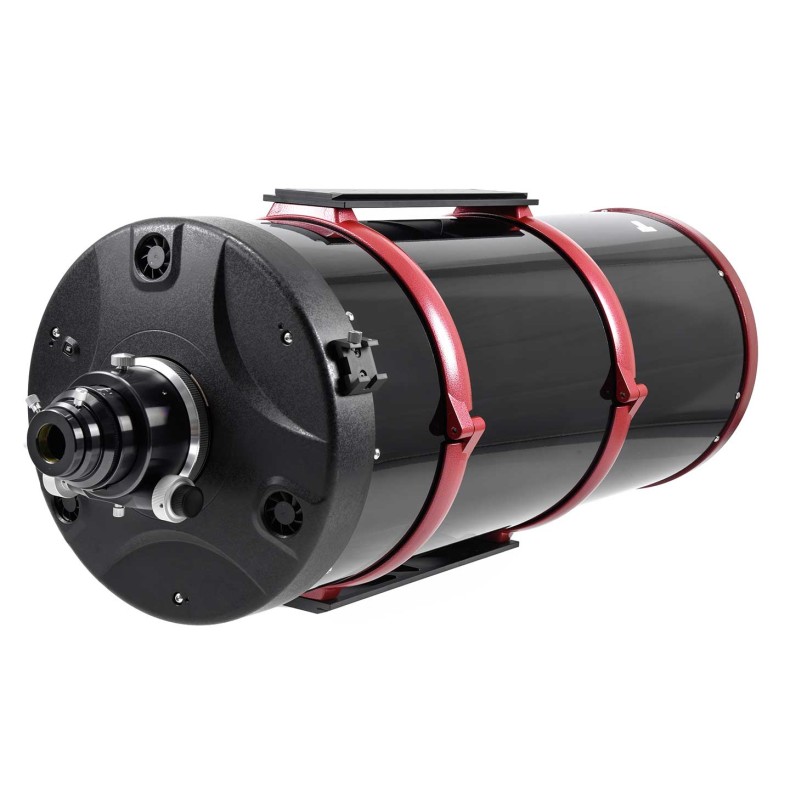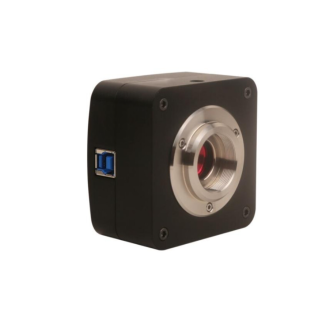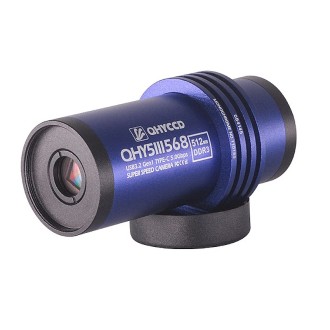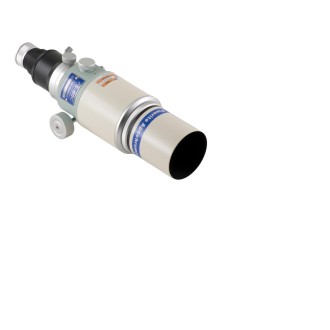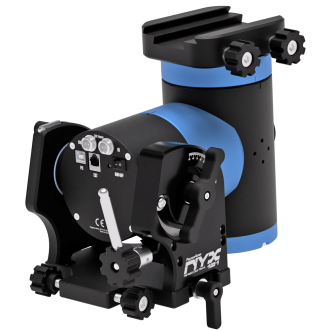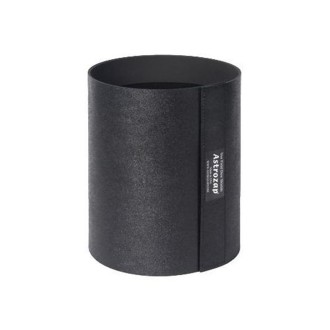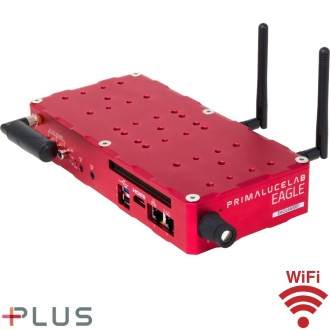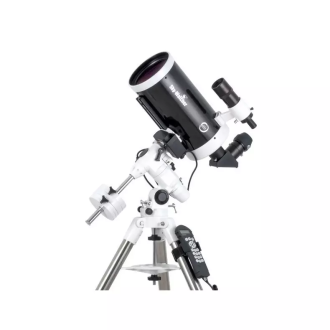Optical Tube TS-Optics GSO Ritchey-Chretien Pro RC 12" f/8 304/2432mm
| Carrier | Description | Estimated Delivery | ||
|---|---|---|---|---|
 |
Home delivery - International | Home delivery - International |
Thursday, 15 May - Thursday, 22 May |
|

Home delivery - International
Home delivery - International
Estimated delivery:
Thursday, 15 May - Thursday, 22 May
Optical Tube TS-Optics GSO Ritchey-Chretien Pro RC 12" f/8 304/2432mm
Most large professional telescopes are built according to the RC principle. Teleskop-Service RC telescopes are primarily intended for amateur astronomers with photographic interests. These RC telescopes are ideal for high-resolution astrophotography. Of course, it is also possible to observe through an RC. Here, too, the large corrected field of view is appreciated. Stars are generally sharper than, for example, in a Schmidt-Cassegrain.
This 12" RC is especially suitable for fixed installation. The complete tube protects the optics from stray light and dew. We recommend a stable mount for the 12" RC, such as the EQ8 or the Celestron CGX-L.
The advantages of the TS-Optics RC telescopes at a glance:
Hyperbolic primary mirror and secondary mirror for a large, fully corrected field of view.
Astrophotography with camera sensors up to 30 mm diameter is also possible without corrector. For larger sensors, e.g. with full frame size, Teleskop-Service offers ready-to-use corrector solutions.
94% improved reflectivity on primary and secondary mirrors for an even brighter image.
Significantly faster cooling time due to open design and active ventilation of the primary mirror.
Large back focus for correctors, reducers or binocular focusing.
High-quality 3" MONORAIL focuser with M69x1 threaded connection and 2" / 1.25" plug-in connection.
Astrophotography through the RC telescope:
Due to the large corrected field of view of the RC telescopes you can take pictures with SLR cameras up to APS-C format without corrector. The RC is therefore a pure mirror system for astrophotography. Images become ultra-sharp. It is no longer necessary to block infrared light, which can be used for imaging. This further reduces the exposure time.
For directly focused exposures you will need the M117x1 extension tubes, which are included in delivery. These are threaded between the telescope and the focuser and thus reduce backfocusing.
The generous back focus also allows the connection of correctors, which we recommend from the use of full-frame sensors. You can also connect a focal reducer to further increase the speed of the RC.
You can attach the camera directly via the 2" receptacle or you can screw it all together via the internal M69x1 thread of the focuser. You will find suitable adapters in the accessories section.
The MONORAIL 3" focuser: much more than a Crayford:
The Monorail focuser combines the smoothness of a Crayford focuser with the rigidity of a rack and pinion focuser. This makes for successful astrophotography.
Solid stainless steel guide rail instead of small ball bearings for extra rigidity.
No more tilting when holding the drawtube.
360° rotation for optimal object orientation.
M69x1 female thread for screw adaptations
2" and 1.25" compression rings for press fittings
1:10 gear reduction for precise focusing
Motorized focus can be easily adapted
Hyphen scale for quick focus resetting
Easy to use
Astrophotography through the RC telescope:
Due to the large corrected field of view of the RC telescopes, you can take pictures with SLR cameras up to APS-C format without corrector. The RC is therefore a pure mirror system for astrophotography. Images become ultra-sharp.
The generous rear focus also allows the connection of correctors, which we recommend from the use of full-frame size sensors. You can also connect a focal length reducer to further increase the speed of the RC.
Using an SLR camera without focal length reduction: You need a 50 mm and a 25 mm extension between focuser and telescope (Art. No. GSRCV50 and GSRCV25).
Use of an SLR camera with CCDT67 or CCD47 focal reducer: In this case a 50 mm extension between focuser and telescope is sufficient (Art.No. GSRCV50).
Primary mirror and secondary mirror made of fused silica with an improved reflectivity of 94%:
The quartz glass does not change its properties with temperature differences. If the temperature drops slowly during exposure, other mirror materials, such as Pyrex, will cause the mirror to deform and thus shift focus. This problem does not exist with quartz glass mirrors. Therefore, focus is better maintained, which is very important for long exposures. Both mirrors have a reflectivity of 94%. The image is brighter than with telescopes with only 90% reflectivity.
The advantages of TS RC telescopes for astrophotography:
The TS RC telescopes are true Ritchey-Chrétien telescopes. The Maksutov and Schmidt-Cassegrains have spherical mirrors and need correctors to be able to use a large field. With the Schmidt-Cassegrains, errors in the field can even be seen in visual use. Maksutow cassegrains are often so weak that they are not suitable for astrophotography. RC telescopes have hyperbolic main and secondary mirrors. These mirrors are more difficult to manufacture, but offer much better field sharpness and far fewer field errors.
why an RC telescope is superior to a Schmidt-Cassegrain with correctors:
Celestron EHD or Meade ACF telescopes require a corrector. In addition, these telescopes have a Schmidt plate at the front that is prone to dewarping. The RC system is a pure reflector system without lenses in the beam path. This makes it possible to use all the light also in the infrared range. The image is brighter and exposure times are shorter. The image field of an RC telescope is by nature relatively flat and comma-free.
There are no offset problems with RC telescopes TS:
Telescopes with primary mirror focusing often suffer from the "shift" problem. The image shifts when focusing or even jumps. Meade and Celestron already have the problem under control, but the effect is still noticeable. The TS RC telescopes do not have this problem because the primary mirror is fixed. Focusing is done by a high quality focuser. An additional advantage is the optimal distance between the primary and secondary mirror. This guarantees the best possible image. If the primary mirror is shifted towards the secondary mirror, you practically never have the optimum distance.
TECHNICAL SPECIFICATIONS:
- Optics: Ritchey-Chrétien RC Optics
- Aperture 304 mm / 12"
- Focal length: 2432 mm
- Focal ratio: f/8
- Resolution: 0.38"
- Reflectivity: 94% enhanced reflectivity
- Rear focus: 233 mm from the rear, 127 mm from the 2" focuser receptacle
- Focuser connection: 2", 1.25" and M69x1 thread (female)
- Tube diameter: 356 mm
- Tube length: 890 mm without focuser - 1010 mm with focuser
- Weight: 20,5 kg
- Total obstruction per secondary: 150 mm
- Dovetail rods: 2x dovetail style Losmandy with tube rings
- Shipping box dimensions: 1150 x 530 x 510 mm (LBH)
- Weight transport box 32 kg
what is supplied under this part number?
- TS 12" f/8 RC astrograph - with steel tubing
- Dovetail style dovetail bars Losmandy on both sides
- Tube rings with flat connection surfaces on both sides
- 3" monorail focuser with 2" and 1.25" reductions
- M117 extension tubes (2x 25 mm and 1x50 mm)
Optical Tube TS-Optics GSO Ritchey-Chretien Pro RC 12" f/8 304/2432mm

